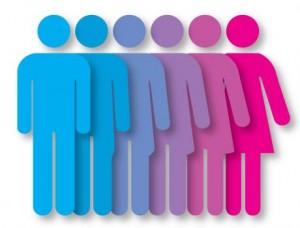While I was glad to see students my age trying to shed light on gender and how we as a society see these genders, I felt the talk Break the Box on Monday evening to be less than stellar. I could see that the members of the Intergroup Dialogue Project put a lot of thought into their presentation and genuinely did want to discuss how gender norms affect our lives daily. Our group brought up different examples of how different occupations and toys are gendered (the first thing that came to my mind was that scene in Friends when Ross doesn’t want his son Ben to play with a Barbie and instead forces him to play with a GI Joe).

One of the more interesting exercises they introduced in this talk was an activity that was inspired by a Ted Talk. There were two physical boxes: A Womanbox and a Manbox. Inside each of those boxes were occupations and roles that were seen by society as respectively female and male. After picking up a card from each, I saw I got “supporter” as the female role and “director” as a male role. And this did make sense to me, as there is indeed an absence of female directors in Hollywood. Thinking further on the term “supporter,” this can mean not just supporting someone in their time of need (because I see that as a neutral construct; anyone can help someone out), but also in regards to Hollywood, there has been also much attention onto the fact that the number of strong female protagonists is dramatically fewer than the number of male protagonists. Oftentimes, females are supporting characters; especially in the case of comedies, female supporting characters tend to be one-dimensional and only serve to promote the plot of the male protagonist. So I agreed with this exercise.
However, one of the exercises beforehand threw me off. Before taking part in the discussion, the presenters had us all fill out a survey before coming to the event, asking us “What traits do you find attractive in a man or a woman?” For a man, I filled out strong, independent, and competitive, and for a woman, I put independent in addition to strong-willed and determined. To my surprise the next day, during the presentation, when they collected the results from the survey, all of those attributes fell under the title of “What IS a man or woman.” And these resulted in characteristics like “strong, aggressive, big dick,” for a man and “weak, compassionate, sensitive” for a woman. Having an attraction towards men or women and defining what a man or woman is serves two completely different purposes. I looked at the results they compiled (a majority of them not even from the surveys we filled out, but taken merely from the internet) and was in complete shock. I do not see women as weak at all. I look at my mother, who is independent and self-sufficient and can be aggressive at times, and don’t see someone who absolutely has to be weak. So I found fault with this.
Overall, I found this event to be very heteronormative and only addressed the gender binary. I took the term “break the box” to be a phrase indicative of attempting to break the box of the gender binary, acknowledging that there were only two genders, not more. They did address that gender and certain gender behaviors were social constructs, but didn’t do anything to address those who identify as gender neutral, are genderfluid, or any other form of gender identification. Because the advertisement for this event had the picture of a spectrum of the man and woman symbols, I figured it would address these issues – maybe additionally what other constructs biologically make someone a man or woman, or talk about intersex peoples as well, because intersex people do exist.
So when I think of “break the box,” I think of the boxes in the doctor’s office that you have to check off when filling out the forms. Are you either A. male, or B. female? Only two boxes are presented with no regard for what people may be feeling inside, just that you somehow have to shove yourself into one box or the other. Instead of trying to understand these boxes like the event had me do, we should be presented with more than 2 boxes, or rather, a spectrum of boxes. Because gender isn’t concrete. At all.



